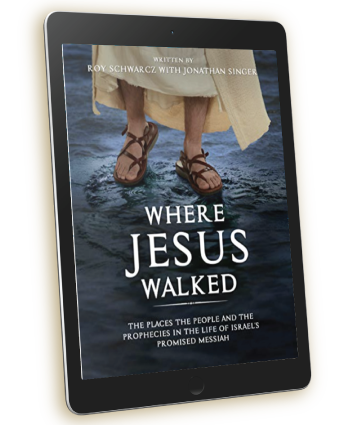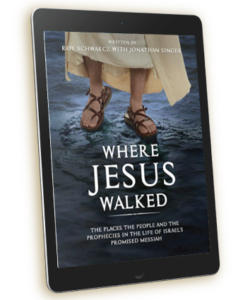Matthew 14:1-2 – Herod was a ruler under the Roman Emperor, hence the title tetrarch. This of course was not Herod the great who died, but his son also known as Herod Antipas. Following the death of Herod the Roman government split the kingdom of Herod in three ways the other two sections that was ruled by Herod were given to Archelaus (Matthew 2:22) and Philip (Matthew 14:3).
Herod Antipas spent most of his time in Tiberius on the Southwest portion of the Sea of Galilee. His rule was over the Galilee and Perea (The east bank area of the Jordan). We have no record of Jesus ever entering Tiberius, perhaps because it was a Roman city, and he wanted to avoid the attention of Rome and her minions. When Herod Antipas finally learned about Jesus, he thought immediately that it was John the Baptist risen from the dead.
Luke 9:7-8 Now Herod the tetrarch heard about all that was going on. And he was perplexed, because some were saying that John had been raised from the dead, 8 others that Elijah had appeared, and still others that one of the prophets of long ago had come back to life. (Malachi 3:1, 4:5).
Matthew 14:3-13 are a flashback of Herod’s dealings with John from this portion we learn that Herod Antipas was a man who was easily manipulated and while he had a better conscience than his father was unable to stand up for his convictions. We learn all too clearly the consequences of being drunk and making vows.
One thing interesting about John the Baptist was his willingness to confront a secular ruler concerning his sins. The Essenes were a community of believers that would not mix in with worldly politics and politicians. With John’s death the line of Old Testament prophets ended. (Matthew 11).
The death of John is reported to Jesus, and then retreats to a lonely place on the Sea of Galilee. John was a relative and more importantly, the first to die for the Messiah. Jesus knew that many of His disciples would soon be following John and Him in a martyrs death.
Matthew 14:14-21 The great multitude that came here numbered 5,000 men. From this we believe that there were in all likelihood more than 10,000 people. He felt compassion, the word actually describes the bowels, which in Jewish understanding was the seat of the emotions. In response Jesus healed the sick. Now all this ministry was occurring far from any village or town and as the first evening came the period from three to six pm, the disciples began to worry about how these people would be able to get dinner.
In the account in Matthew they approach Jesus to tell Him to send them away so that they will be able to have enough time for the journey to go and buy dinner. This significance of what is about to happen is so important that it is recorded in all four different Gospels – Matthew, Mark, Luke, and John. In the account of John Jesus actually began setting the stage for the crises of faith by asking Philip where could bread be bought to feed these people.
John 6:5-7 – Andrew then brings word that a young boy has offered his food to the ministry of Jesus. John 6:8-9.
Matthew 14:22-23 In the next portion of Scripture we come to the place where the twelve declare Yeshua to be Lord. Initially Yeshua tells the disciples to go on ahead of him by getting into the boat and crossing the Sea of Galilee. You’ll remember that they were in a remote part of the Galilee when they fed the multitude. Yeshua told the disciples to leave while he dismissed the multitudes. The multitudes wanted to make him King because of the miracle of the feeding of the multitudes.
To avoid that Yeshua goes up on the mountain to pray. The disciples were reluctant to leave Him, probably because they were now building momentum with the crowd calling for Him to be King. But Yeshua made them leave. He wanted them away from the crowds clamoring for Him to be King.
Matthew 14:24-25 – Not long after the disciples took off in their boat the wind came up and the sea became tempest tossed. A stadia was about 1/8 of a mile. Many stadia in John 6:19 is said to be three to four miles. The storm probably carried the boat so far from shore. The disciples were already upset that Yeshua was not with them, and now this terrible storm. In Matthew 8:26 they were in another storm but Yeshua was in the boat with them.
But now Yeshua was not with them. He now came to them in the fourth watch. The night was divided into four watches. The first from 6-9, the second from 9-12, the third from 12-3, and the fourth from 3-6. The disciples were probably battling this storm in the water for around eight hours. Yeshua knew that they were in trouble, but He didn’t hurry. He wanted them to be at the end of their own resources before he came to their rescue.
Think of Lazarus, and the delay that Yeshua purposefully made. The disciples had just seen the feeding of the 5,000 men, they had witnessed His healing of the sick and the raising of the dead, but when it came to the reality of dealing with a raging storm, their faith in God and His Messiah were not very strong. Now in their greatest need He comes to them walking upon the water.
Matthew 14:26-27 – Instead of rejoicing at the sight of Yeshua coming to them they became more frightened. They thought it was the ghost of Yeshua, or worse a mocking phantom. Not only were they exhausted from fighting the storm, now they had to deal with a shared hallucination. Yeshua told them to take courage. When they heard his voice they probably did take courage.
Matthew 14:28-30 – Peter’s actions here are not to test the Lord but rather to be with Him. Notice he asks permission to come knowing that Jesus had the power to enable him to walk on the water. In the mind of Peter it was safer to be with Jesus on the water than in the boat without Jesus. This is confirmed by Jesus saying to Peter “come”. Peter was the leader of the twelve because of his overriding desire to be with Jesus.
And the love of the Messiah for those who will come to Him is always manifested with the words “come”. When Peter began walking on the water the reality of his actions came to him, probably with the first splash of water on his face. Then the Scriptures say that he saw the wind. When he realized that what he was doing defied natural laws, and his eyes were on the problem rather than on the Lord he began sinking.
His faith was enough to get him out of the boat but not all the way across the water. With all of his clothes on he began sinking very quickly. Peter cries to the Lord to save him, and the response of Jesus is immediate. But was admonished for his lack of faith. I’m not sure if any of us would have had the chutzpah to actually get out of the boat. But the lesson here is that no matter how much faith you have, God will try to stretch your faith so that you can accomplish more than would be humanly possible.
The greatest miracle occurred without Jesus saying a word. As soon as Jesus got into the boat the wind stopped. In the companion account in John 6:21, not only did the wind stop but immediately they were on land at the location they intended to be at all along. With this comes a wonderful confession of faith.
The disciples worshiped Him, and confessed “you certainly are the Son of God.” It seems apparent that at this point they did not know what was involved in making this statement. Their confession however is such that they realize that Jesus and God are intimately related. Their knowledge and understanding of who He was would continue to grow until they received the Holy Spirit on the Day of Pentecost.
Matthew 14:34-36 The boat arrived at Gennesaret, which is located at the Northern edge of the Sea of Galilee between Capernaum and Magdala. The plains of Gennesaret were well watered and very fertile so that the land was completely devoted to raising crops. It was a very rural area and perhaps Jesus to land here that He and the bone weary disciples might have some rest. But when the people there recognized Jesus the word got out quickly, and they brought to Him all who were sick.
Assurance of His ability to heal was so certain that touching the fringe of his cloak would heal. This fringe was known as Tsitsis. Tzitzit are the fringes at the corner of the prayer shawl (called a tallit) or the short jacket (called the tallit ratan) worn by Orthodox men under the coat or vest. The command to wear tzitzit comes from Numbers 15:37-39.
The children of Israel were commanded to put fringes on the borders of their garments forever. Tzitzit are symbols of the 613 commandments contained in the Torah. These people were only interested in His ability to heal and quickly left His presence once they received what they came for. The sad part of this kind of reaction, is that the healing would only be temporary. When a person truly comes to Messiah and surrenders their life to Him, the healing then is eternal.


